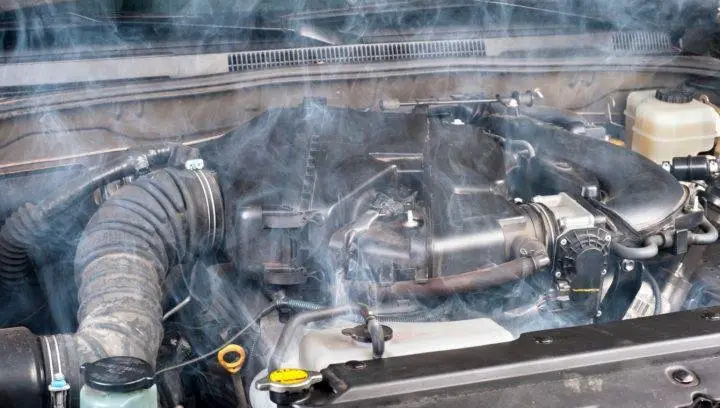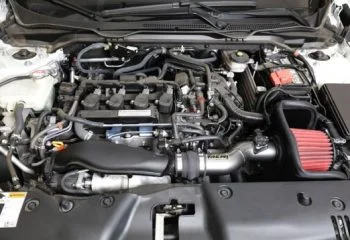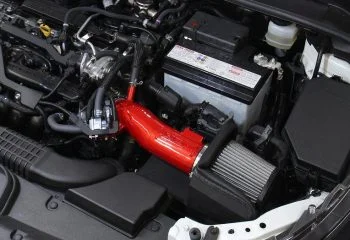If your car runs low on oil, it’s not going to run very well. In fact, if you run your car too low on oil, you can do some serious damage to the engine. That’s why it’s important to make sure that you keep your car topped off with oil, especially if you’re driving long distances.
So, can you add oil to a hot engine?
You can do so even if it’s hot, if you need to add oil to your engine. There’s no need to wait for the engine to cool down first. However, if you’re changing the oil, it’s best to do so when the engine is cold. This will help to prevent spillage and make the process easier overall. So, if you’re simply adding oil, there’s no need to wait – you can do it even when the engine is hot.
In this post, we’ll explain why can you add oil to a hot engine and why it’s important to wait until the engine has cooled down before changing oil, and offer some tips for keeping your car running smoothly.
What's in this post?
Can You Add Oil To A Hot Engine and Why?
When you add oil to a hot engine, the oil is able to flow more easily. This is because when the engine is hot, the molecules in the oil are more spread out.
When the molecules are more spread out, they can flow more easily and lubricate the engine better.
The oil is less viscous and will flow easier. This is important because you want the old oil to be flushed out completely and the new oil to circulate evenly throughout the engine.
The oil will get hot enough, so the old oil doesn’t stick to the oil pan and other engine parts. The oil also helps to cool down the engine by absorbing some of the heat. So, adding oil to a hot engine might help to improve its performance and prolong its life.
However, it’s important not to overfill the engine with oil, as this can cause damage. You should also be careful not to get any oil on your skin or clothing, as it can cause burns.
Ideally, you should change the oil when your automobile is warm but not too hot. Additionally, when the motor oil is only warm, you may change it without getting burnt.
If you’re not sure how to add oil to your engine, consult your car’s manual or take it to a qualified mechanic.
When It’s Time to Change Your Oil or Add Oil
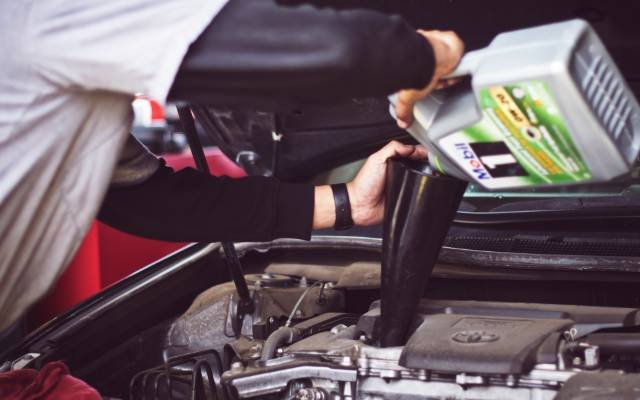
If your car is running low on oil, it’s time for a change. The process is simple: just add more oil to the engine.
You can do this yourself or take it to a mechanic. If you’re adding oil yourself, make sure to use the correct type of oil and the correct amount. You can find this information in your owner’s manual or from the manufacturer.
Once you’ve added oil, check the level again after driving for a while to make sure it’s still at the correct level.
It’s also a good idea to check your oil level regularly, even if you’re not due for an oil change. This way, you can catch any problems early and avoid damage to your engine.
If you’re due for an oil change, the process is a little more involved. You’ll need to drain the old oil from the engine and replace it with new oil.
When changing your oil, it’s important to use the correct type of oil. Again, you can find this information in your owner’s manual or from the manufacturer. Using the wrong type of oil can damage your engine.
Change your oil every 5,000 – 7500 miles to prolong its life and keep it running smoothly. Oil changes are also necessary for vehicles that use fully synthetic motor oils; they may be able to go 15k without needing a change.
It’s also important to use the correct amount of oil. Overfilling your engine with oil can cause damage, while not adding enough oil can lead to engine problems as well.
The best way to ensure you’re using the correct amount of oil is to take your car to a professional for an oil change. They will have the proper equipment and knowledge to do the job quickly and safely.
How to Check Your Oil level?
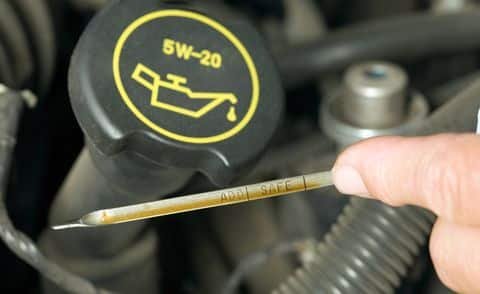
There are a few different ways that you can check your oil level. The most common way is to check the dipstick. Most cars have a dipstick located near the engine, and this is the best way to check your oil level.
To check your oil level with the dipstick, pull it out of the engine and wipe it off on a clean cloth. Then, insert it back into the engine and pull it out again.
You should be able to see two marks on the dipstick – a “full” mark and an “empty” mark. If the oil level is between these two marks, then your oil level is fine. If it’s below the “empty” mark, then you need to add oil. (see what color should be on dipstick)
Another way to check your oil level is to look at the oil pressure gauge on your dashboard. Most cars have an oil pressure gauge that will tell you if your oil level is low.
If the needle on the oil pressure gauge is in the red zone, then your oil level is low and you need to add oil.
Finally, you can also check your oil level by looking at the engine itself. If you can see oil leaking from the engine, then your oil level is probably low.
Of course, the best way to check your oil level is to consult your owner’s manual. Every car is different, and your owner’s manual will have specific instructions on how to check your oil level.
Pay attention to signs of oil contamination. that’s when there’s milky color in your oil, or when your oil looks like it has water in it. This means there is a gap somewhere eg. in your piston rings, and oil is seeping into cylinders.
You should also be on the lookout for oil leaks. If you see oil leaking from your car, then you need to take it to a mechanic to have it fixed.
Oil leaks can lead to engine problems, and they can also be dangerous if you get oil on the tires while driving. If you see this, take your car to the mechanic asap.
There are enough tools there to determine if there is a leak and what kind of repair is necessary.
When checking the oil, you should also check the dirt in the engine cage. High dirt means that the air filter is not doing its job, and you should replace it. Dirt also causes engine wear if not cleaned in time.
You can use a degreaser and a brush to clean the engine cage, paying special attention to the oil cooler fins. If they’re too damaged, you’ll have to replace the engine cage.
This is something you should do every time you check your oil level.
Useful read: Can You Mix Oil Brands or Mix Different Oil Types? and Why?
FAQs about add oil to a hot engine
Do you have to let an engine cool before adding oil?
No, you don’t have to let an engine cool before adding oil. In fact, it’s best to fill up when the engine is still warm.
The warmth makes it easier for the oil to flow and not coagulate.
However, if your engine is significantly overheated, you should wait for it to cool completely before adding more oil, overheating can cause oil to splash and contaminate key components.
How long should I wait for my car to cool down before changing the oil?
To avoid spilling oil all over your car, it is a good idea to let the vehicle rest for 20-30 minutes before opening up its hood.
Wear gloves and have plenty of clean towels handy so you can quickly remove any that spills on yourself when draining out old or messy fluids from inside an auto engine compartment.
Should I check my oil when the engine is hot or cold?
It’s important to check your oil level when the engine is cold. That’s because the oil will be at its lowest level when the engine is cold.
Checking the oil level when the engine is hot can give you a false reading because the heat from the engine will cause the oil to expand and look higher than it actually is.
Do check the oil with the engine running or off?
It is generally recommended to check your oil level either before turning on the engine or 5 to 10 minutes after shutting off the engine.
Checking the oil level when the engine is running can be inaccurate, as the oil may appear to be at a higher level than it actually is due to splash-up from the spinning crankshaft.
Additionally, checking your oil level with the engine off will allow you to get a more accurate reading.
Conclusion
Engine oil is an important part of your car. It keeps the engine running smoothly and avoids wear and tear on moving parts.
You should always use the oil recommended for your car, as specified in your owner’s manual.
Adding oil incorrectly can cause damage to your engine and can be expensive to repair. I hope with all the information above you will be able to answer the question:”Can you add oil to a hot engine?”

